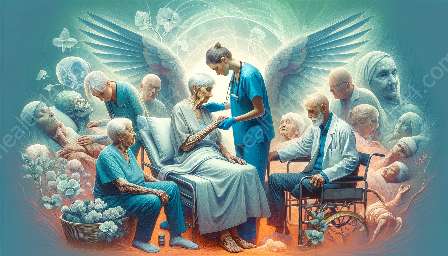As the population ages, the prevalence of age-related diseases continues to grow. However, with advancements in technology, monitoring, and managing these conditions has become more sophisticated. This article will explore some of the emerging technologies for monitoring age-related diseases, with a focus on their impact on geriatrics and proactive healthcare.
1. Wearable Devices and Remote Monitoring
Wearable devices equipped with sensors have revolutionized the way age-related diseases are monitored. These devices can track vital signs, activity levels, sleep patterns, and other health-related data in real-time. This information can be monitored remotely by healthcare professionals, allowing for early intervention and personalized care.
Advantages:
- Early detection of health issues
- Continuous monitoring without limiting daily activities
- Improved patient engagement and adherence to treatment plans
2. Telehealth and Telemedicine
Telehealth and telemedicine technologies have become essential tools in managing age-related diseases. Older adults can consult healthcare providers, receive medical advice, and even undergo diagnostic evaluations remotely. This has been particularly beneficial for individuals with mobility limitations or residing in remote areas.
Benefits:
- Increased access to healthcare, especially for those with limited mobility
- Reduction in hospital admissions and healthcare costs
- Convenient consultations and follow-ups
3. Artificial Intelligence (AI) in Disease Monitoring
AI has the potential to transform the monitoring and management of age-related diseases. Machine learning algorithms can analyze large datasets to identify patterns, predict disease progression, and provide personalized treatment recommendations. AI-powered tools can also assist in early diagnosis and risk stratification for age-related conditions.
Impacts:
- Precise and timely diagnosis of age-related diseases
- Enhanced predictive analytics for better healthcare planning
- Tailored treatment strategies based on individual health data
4. Remote Patient Monitoring Systems
Remote patient monitoring systems collect and transmit patient data to healthcare providers in real-time. These systems can be integrated with electronic health records and decision support systems to track changes in health status, medication adherence, and response to treatment. This proactive approach facilitates early interventions and reduces the likelihood of emergency events.
Key Features:
- Continuous monitoring of vital signs and symptoms
- Integration with electronic health records for comprehensive patient evaluation
- Improved coordination of care between patients and healthcare teams
5. Pharmacogenomics and Personalized Medicine
Advancements in pharmacogenomics have opened the door to personalized medicine for age-related diseases. Genetic testing can reveal individual responses to medications, allowing for tailored treatment plans and minimizing adverse drug reactions. This approach is particularly crucial in geriatric care, where multiple medications and comorbidities are common.
Advantages of Personalized Medicine:
- Reduced risk of adverse drug events and interactions
- Optimized drug selection for better treatment outcomes
- Minimized trial and error in medication management
These emerging technologies are reshaping the landscape of age-related disease monitoring and management. By leveraging these tools, healthcare providers can proactively address the healthcare needs of aging populations, optimize treatment strategies, and improve overall quality of life for older adults.


